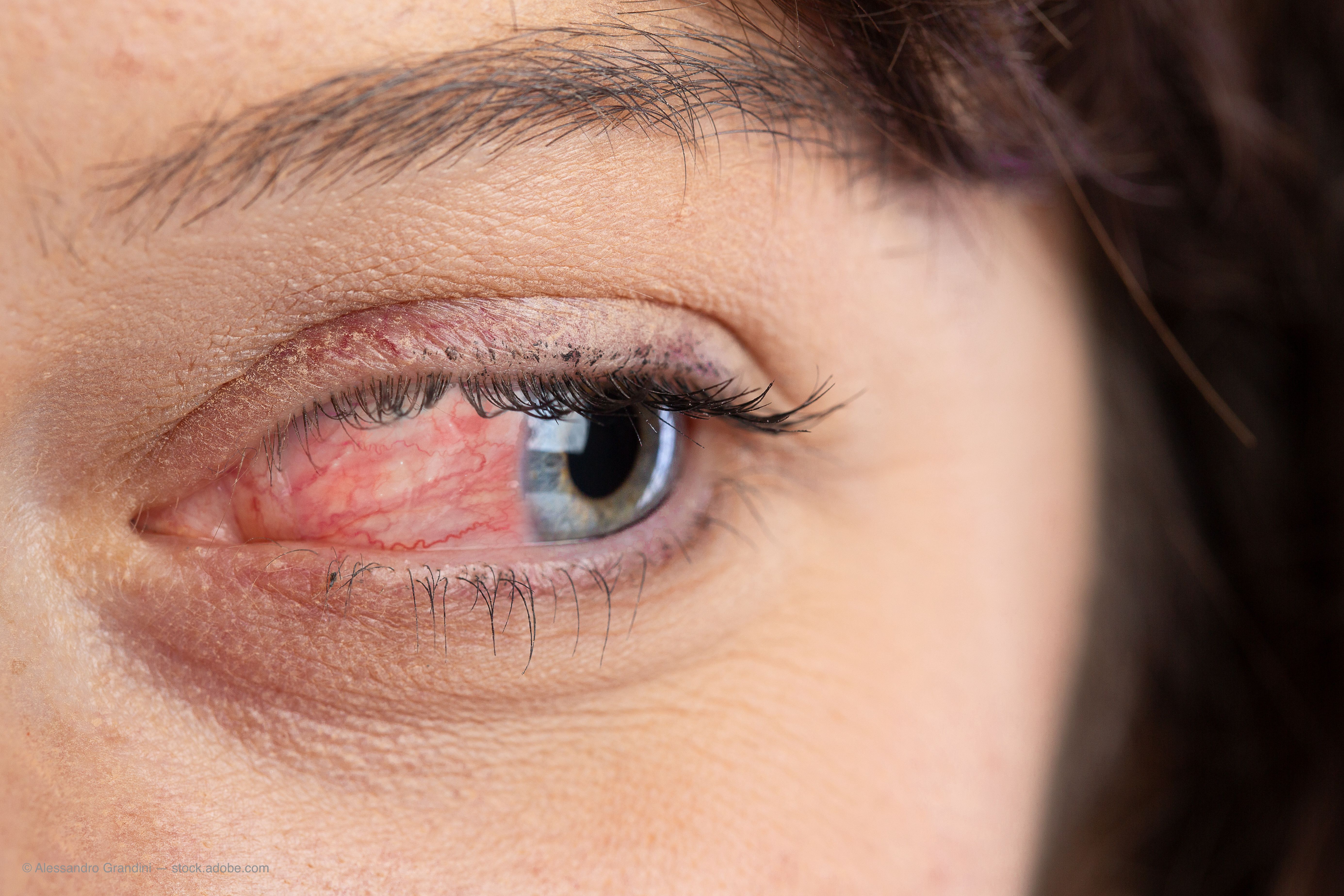Publication
Article
Digital Edition
VA, visual function are going the way of ocular inflammation
Author(s):
Measures of inflammation can predict treatment outcomes for patients.

Reviewed by Ian Han, MD
Physicians may soon have new tools for quantifying inflammation associated with uveitis. Automated algorithms have been developed that can correlate imaging-based measures of uveitis activity with visual acuity (VA) and visual function.
These algorithms work with commercially-available, standard care imaging and their metrics have potential use as surrogate outcome measures in uveitis clinical trials.
Current measures of inflammation are limited because they are ordinal and subjective, according to Cindy Chen, BA, of the Cleveland Clinic’s Cole Eye Institute in Cleveland, Ohio.
Related: Strategies to address challenging ocular infections
She and a team of colleagues have been working on automated and semiautomated imaging-based quantifications of inflammation to produce continuous and objective measures of intraocular inflammation.
Their goals are to demonstrate that these quantitative metrics are not only reliable and reproducible but relate well to visual acuity and measures of function.
Quantifying inflammation
The investigators performed a prospective observational case series, the Imaging Quantification of Inflammation study, that included patients with active uveitis who received standard-of-care medications and were followed for 6 months.
The patients underwent standard clinical examinations and optical coherence tomography (OCT), anterior-segment OCT (AS-OCT), and ultrawidefield fluorescein angiography (UWFFA) at baseline and 1, 3, and 6 months.
At each visit, their VA was measured, and the patients completed the National Eye Institute Visual Function Questionnaire-25 (NEI VFQ-25).
Related: Ocular manifestations of mycoplasma-induced rash and mucositis
Investigators created customized automated software that can continuously image and measure intraocular inflammation, specifically anterior-chamber cell quantification with AS-OCT, UWFFA leakage quantification, and OCT fluid quantification, with the focus on the latter 2 measures.
They then correlated the imaging-based measures of ocular inflammation with the VA and visual function scores.
Chen was able demonstrate the method of semiautomated quantification of vascular leakage using UWFFA. Using this method, the software developed the total leakage index, defined as the total leakage area divided by the total region of interest analyzed.
They also devised a macular-centered retinal leakage index; the software provides an image with 3 regions of interest circled, with the first representing the central 3 disc diameters, the second representing 6 disc diameters, and the third representing 9 disc diameters. The leakage index was measured in each diameter.
Related: Ocular blood flow reflects systemic organ blood flow in hemorrhagic shock
With semiautomated volumetric fluid analysis using spectral-domain OCT, a fluid index was generated that was the sum of the intraretinal and subretinal fluid divided by the actual retinal volume from a 6-mm cube scan, Chen explained.
Study results
Eighty six eyes from 43 patients (average age, 46 years) were included in the study. The most frequent diagnoses were idiopathic uveitis, sarcoid uveitis, and birdshot chorioretinopathy.
The average logarithm of the minimum angle of resolution (logMAR) VA was 0.22 and 0.25 at baseline and at 6 months, respectively.
Semiautomated quantification of OCT fluid demonstrated good correlation with visual acuity.
“We found that the OCT fluid index was correlated moderately with the logMAR VA at all evaluations,” Chen said. “A worsening fluid index was correlated positively with worsening VA (r = 0.4, P < 0.001).”
Promising results were also found when relating vascular leakage on UWFFA with visual acuity. Specifically, an overall higher total retinal leakage index was correlated with worse VA (r = 0.4, P < 0.001), and a similar relationship was found when evaluating macular leakage in the central 3 disc diameter zone (r = 0.489, P < 0.001).
“The highest correlation between the macular leakage in the central 3 disc diameters and the worsening logMAR VA was seen at baseline in patients with active uveitis (r = 0.617, P < 0.001),” Chen said.
Related: Surgery for external ocular diseases: Managing common presentations
In addition to visual acuity, visual function was also mildly correlated to vascular leakage at all visits, with a higher total retinal leakage (r = –0.156, P = 0.015) and macular leakage in the central 3 disc diameter zone (r = –0.237, P = 0.0002) suggesting worse visual function.
Between the retinal leakage and OCT fluid measures themselves, the investigators also found a mild correlation.
A greater total retinal leakage index was positively correlated with a greater OCT fluid index (r = 0.272, P < 0.001), and macular leakage in the central 3 disc diameters was correlated mildly with greater OCT fluid (r = 0.343, P < 0.001), Chen noted.
The take-home messages from this study are as follows:
- Macular leakage at the 3-disc diameter on FA and the retinal fluid index on OCT are correlated moderately with VA and visual function.
- These continuous measures of inflammation are continuous and can quickly be generated from commercial imaging modalities.
- The parameters of inflammation quantified using an automated algorithm can be used as surrogate outcome measures.
--
Cindy Chen, BA
e:srivass2@ccf.org
This article is adapted from Chen’s presentation at the American Academy of Ophthalmology’s 2020 virtual annual meeting. Chen has no financial interest in this subject matter; the study was funded by Santen Inc.

Newsletter
Don’t miss out—get Ophthalmology Times updates on the latest clinical advancements and expert interviews, straight to your inbox.





